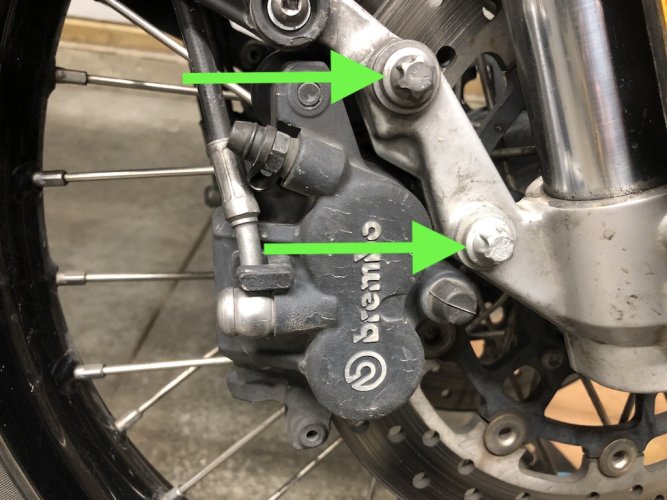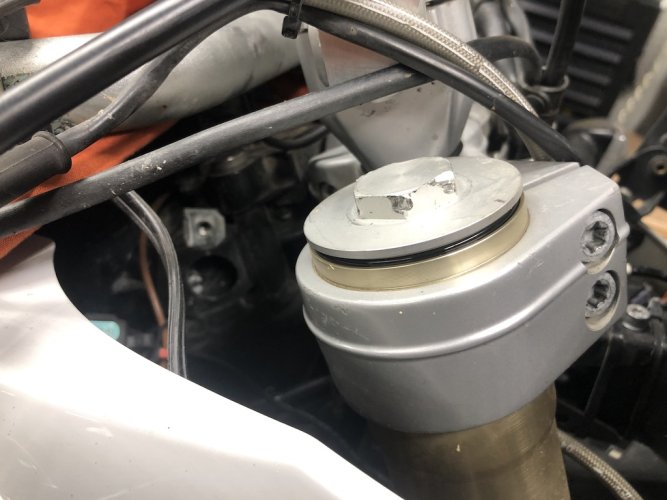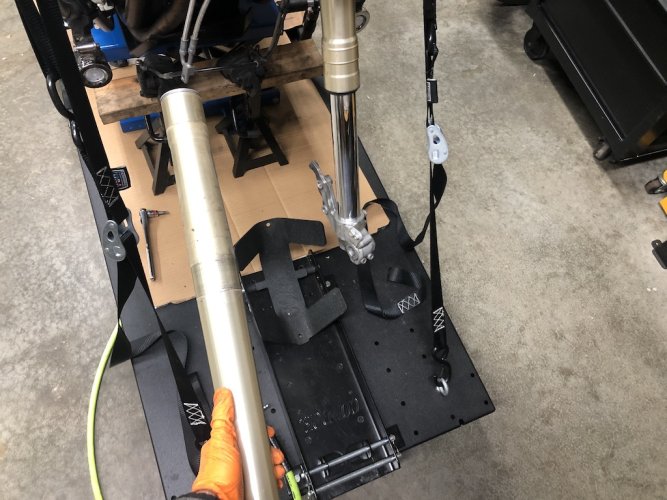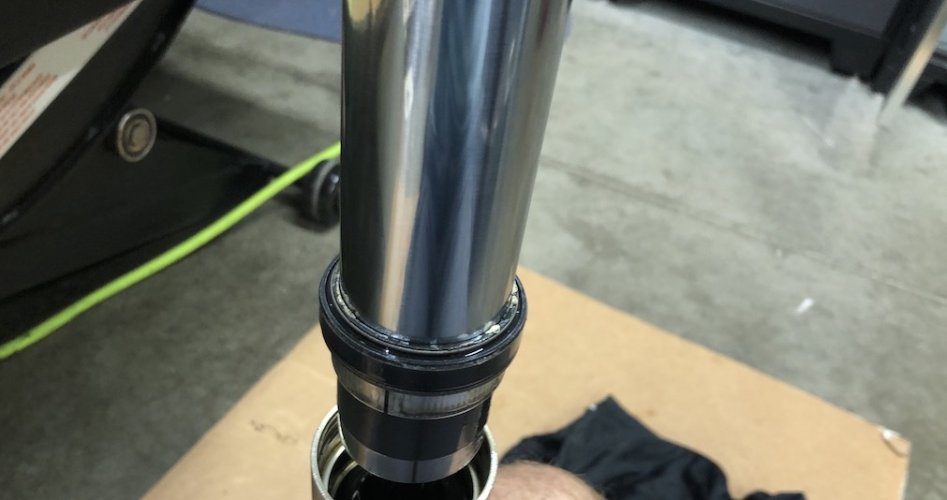The articles, posts and comments in this tech section are posted by individual members and reflect their personal thoughts and experiences with repairing, maintaining, and generally working on motorcycles. This information may require specific knowledge and skills, may or may not be correct or current to model.
The authors of information found here and the BMW MOA take no responsibility for ensuring the accuracy of any information (including procedures, techniques, parts numbers, torque values, tool usage, etc.), or further for any damage of any kind or injuries incurred or caused by anyone following the instructions or information found here.
It is the duty of the individual to either assume the liability himself for responsibly using the information found here, or to take the bike or accessory to a Dealer or other qualified professional service.
Please ensure you dispose of your used chemicals, oils and fuels in an environmentally responsible manner. Most Auto Parts stores and service stations will accept used oil and lubricants, tires and batteries, please check for your local availability. Here's a link where you can look up a place to dispose of your used fluids (oil, coolant, brake fluid, etc.) - http://earth911.com/
This article, text and photos are Copyright of the individual authors and the BMW MOA, any copying or redistributing is permitted only by prior written authorization.
PLEASE PRINT AND READ ALL THE INSTRUCTIONS BEFORE BEGINNING!
Final note: The motorcycle's two wheels are the only thing keeping you upright. When in doubt, take your motorcycle to a reputable dealer.
------------------------------------------------------------------------------------------------------------------------------------------------------------------------------------
Renewing the fork seals on your 2013 or later BMW F800GS
Fork oil is kept contained in the fork internals by a series of seals. Age, mileage, riding conditions, and previous maintenance (or lack thereof) all contribute to how long those seals keep the fork oil in the correct place.
It's generally accepted that you should not ride for long on a bike that has a leaking seal. Fork oil could easily contaminate your brake pads and disc surfaces, thereby reducing your stopping power. Different fork oil levels between the forks can cause an unbalanced ride and poor shock absorption. Finally, oil can attract more dirt and debris onto the sliding surfaces of the fork, causing what should be a relatively cheap fix (~$35 for the seals and ~$20 for fork oil) into a very expensive one (new forks sliders will run you $578.76 per side).
Note 1: The specific bike shown is a 2013 F800GS using WP Suspension forks (43 mm). Older bikes have a similar process, but use a different style of forks (Marzocchi - 45 mm).
Note 2: The tools and materials used are by personal choice and are not due to any affiliation with any brand
Supplies Required:
SAE 7.5 wt Fork Oil - we need about 1220 milliliters or 41 ounces (1.3 quarts)
New Fork oil seal and new dust seal (Part number as a set: 31 42 8 534 232)
Tools Required:
- 24mm socket (preferably 6-sided) (different size for bigger forks)
- T25 star (Torx) bit
- T30 star (Torx) bit
- T45 star (Torx) bit
- E12 external star (External Torx) socket
- 17mm socket
- 13mm open end wrench
- Ratchet(s) that fit the above
- Flat screwdriver or flat car plastic removal tools
- Fork seal driver of the correct size
- Torque wrench
- Suitable way to raise the front wheel and keep the bike steady
- Container to catch the used oil
- Your least favorite shirt/rag
The authors of information found here and the BMW MOA take no responsibility for ensuring the accuracy of any information (including procedures, techniques, parts numbers, torque values, tool usage, etc.), or further for any damage of any kind or injuries incurred or caused by anyone following the instructions or information found here.
It is the duty of the individual to either assume the liability himself for responsibly using the information found here, or to take the bike or accessory to a Dealer or other qualified professional service.
Please ensure you dispose of your used chemicals, oils and fuels in an environmentally responsible manner. Most Auto Parts stores and service stations will accept used oil and lubricants, tires and batteries, please check for your local availability. Here's a link where you can look up a place to dispose of your used fluids (oil, coolant, brake fluid, etc.) - http://earth911.com/
This article, text and photos are Copyright of the individual authors and the BMW MOA, any copying or redistributing is permitted only by prior written authorization.
PLEASE PRINT AND READ ALL THE INSTRUCTIONS BEFORE BEGINNING!
Final note: The motorcycle's two wheels are the only thing keeping you upright. When in doubt, take your motorcycle to a reputable dealer.
------------------------------------------------------------------------------------------------------------------------------------------------------------------------------------
Renewing the fork seals on your 2013 or later BMW F800GS
Fork oil is kept contained in the fork internals by a series of seals. Age, mileage, riding conditions, and previous maintenance (or lack thereof) all contribute to how long those seals keep the fork oil in the correct place.
It's generally accepted that you should not ride for long on a bike that has a leaking seal. Fork oil could easily contaminate your brake pads and disc surfaces, thereby reducing your stopping power. Different fork oil levels between the forks can cause an unbalanced ride and poor shock absorption. Finally, oil can attract more dirt and debris onto the sliding surfaces of the fork, causing what should be a relatively cheap fix (~$35 for the seals and ~$20 for fork oil) into a very expensive one (new forks sliders will run you $578.76 per side).
Note 1: The specific bike shown is a 2013 F800GS using WP Suspension forks (43 mm). Older bikes have a similar process, but use a different style of forks (Marzocchi - 45 mm).
Note 2: The tools and materials used are by personal choice and are not due to any affiliation with any brand
Supplies Required:
SAE 7.5 wt Fork Oil - we need about 1220 milliliters or 41 ounces (1.3 quarts)
New Fork oil seal and new dust seal (Part number as a set: 31 42 8 534 232)
Tools Required:
- 24mm socket (preferably 6-sided) (different size for bigger forks)
- T25 star (Torx) bit
- T30 star (Torx) bit
- T45 star (Torx) bit
- E12 external star (External Torx) socket
- 17mm socket
- 13mm open end wrench
- Ratchet(s) that fit the above
- Flat screwdriver or flat car plastic removal tools
- Fork seal driver of the correct size
- Torque wrench
- Suitable way to raise the front wheel and keep the bike steady
- Container to catch the used oil
- Your least favorite shirt/rag
Last edited:


















